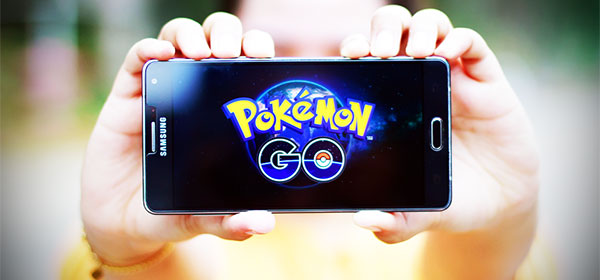Millions of people are playing Pokemon GO, and some are so enthralled they’ve been forgetting about the real world around them. So what is this new game and why is it stopping traffic?
If you have children or grandchildren you’ve probably heard of Pokemon. The franchise began in 1996 with two humble videogames for the Game Boy.
In these games, players took up the role of a young child leaving home to take on the world by becoming a ‘Pokemon Trainer’. Pokemon are wild creatures that can be tamed to become companions, workers or fighters. There are 151 Pokemon in the first game, each with its own strengths and weaknesses, and you must catch and train as many as possible to battle with other trainers in a quest to become the best.
It’s easy to see why the game was so popular with children and teenagers – themselves not far off leaving their family homes to venture into the world (not to mention all the adorable Pokemon).
Over the last 20 years the franchise has spawned dozens of videogames, a television series, trading card games, merchandise and even a theme park.
So why has the newest Pokemon game caused such a stir?
Pokemon GO is perhaps the first popular Augmented Reality (AR) game, meaning one where reality is combined with computer-generated images to create a game that exists somewhere between the real and virtual worlds.

AR technology replaces the fictional world of earlier Pokemon games with the world we live in – so, rather than pressing a button to catch a Pokemon, you have to physically walk over and capture it. The game shows you a GPS map of your surroundings, as well as any Pokemon that are nearby. When you get close enough, you turn on your camera and the Pokemon will be standing right there waiting to be caught. Once you catch one you’ll have to go for another walk to battle it.
Unlike most videogames, Pokemon GO can only be played when you are out and walking, which is great for promoting fitness. Rewards are even given to players for walking long distances.
Unfortunately, the game seems to be so captivating that some players aren’t watching where they’re walking, which has led to a few incidents, such as car crashes, players falling down hills or into ponds, and at least three separate people discovering a dead body … Yikes.
But let’s not dwell on the negatives. In addition to the physical health benefits, the game is also having a positive effect on mental health. Sufferers of depression and anxiety have been “up and moving and meeting new people”, as one player tweeted.
For all its pros and cons, it looks like Pokemon GO is here to stay – at least until they catch them all.
The app is available for free on iPhone, iPad and Android.
What do you think about Pokemon GO? Have you seen anyone out and about playing it?
Related articles:
The top five gadgets to look out for in 2016
Getting back into exercise
The future of technology

